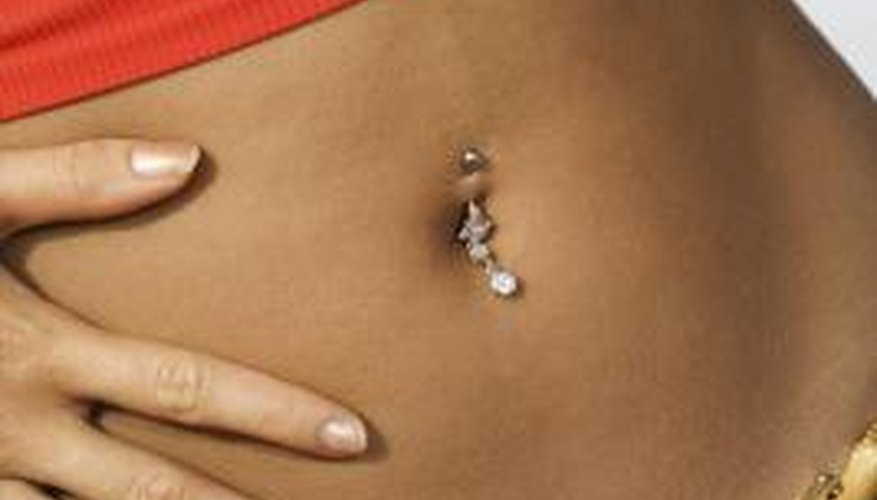New navel piercings can take from six months to one year to fully heal. When a piercing heals, it forms a tube of scar tissue inside the puncture wound to prevent irritants from entering. One substance that can be particularly irritating to an unhealed navel piercing is the chlorine in swimming pools and hot tubs.
Chlorine Irritation
Because a piercing is a puncture wound, it is particularly vulnerable to irritation from chlorine. A navel irritated by chlorine may become red, itchy or painful. Introduction of any chemicals into a fresh navel piercing can significantly hinder healing time and, in extreme cases, could lead to the piercing having to be taken out. Covering your navel piercing with a waterproof bandage that seals all the way around can help prevent chlorine irritation and allow you to go swimming while your piercing heals.
- Because a piercing is a puncture wound, it is particularly vulnerable to irritation from chlorine.
- Introduction of any chemicals into a fresh navel piercing can significantly hinder healing time and, in extreme cases, could lead to the piercing having to be taken out.
Healing Navel Piercings
The aftercare procedure for successfully healing a navel piercing involves soaking the piercing twice a day in saline solution. The traditional way to perform saline soaks is to mix sea salt with warm water and submerge the piercing in a shot glass or medicine cup for 10 minutes. Some piercers sell a special saline spray formulated for cleansing piercings that may not be convenient to soak. After soaking piercings, you should wash them with antibacterial soap.
- The aftercare procedure for successfully healing a navel piercing involves soaking the piercing twice a day in saline solution.
Swimming Aftercare
Perform proper navel piercing aftercare as soon as possible after swimming. You should soak or clean your navel with saline solution, even if it was covered with a bandage, and wash it with antibacterial soap. Because you may have been wearing a swimsuit that pressed your piercing against your skin, wear loose clothing to allow the piercing to breathe and to avoid irritation and discomfort. If you swim every day, keep your aftercare items in a locker or gym bag so they are readily accessible.
- Perform proper navel piercing aftercare as soon as possible after swimming.
- You should soak or clean your navel with saline solution, even if it was covered with a bandage, and wash it with antibacterial soap.
Dealing with Infection
Irritation can turn into infection by providing a breeding ground for any bacteria that enter your piercing. Signs that irritation has become infection include swelling, excess warmth and pus leaking from the piercing. If you have an infection, do not remove your jewellery. It acts as a drain to keep infection from becoming trapped beneath the skin. Contact a professional body piercer right away. He can change jewellery that is embedding due to swelling and advise you on the next steps to take. If you feel faint, sick or have a fever, visit a doctor immediately.
- Irritation can turn into infection by providing a breeding ground for any bacteria that enter your piercing.
